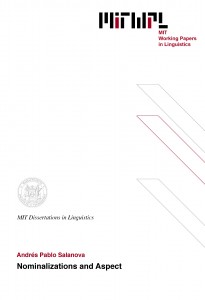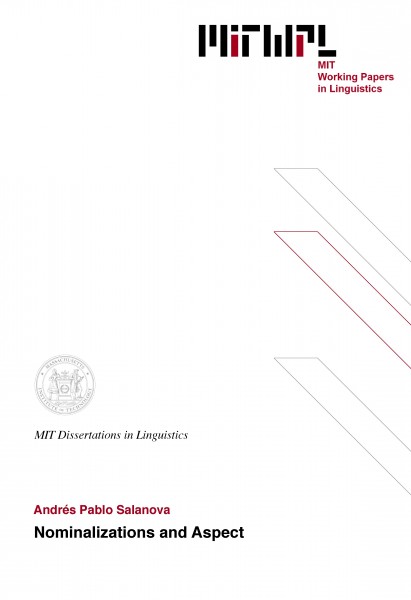Nominalizations and Aspect
Andrés Pablo Salanova, 2012
Languages that have aspectually-conditioned ergativity splits generally oppose a “perfect” tense (often called perfective or aorist), with ergative-absolutive case pattern, to an imperfective where case marking follows the nominative-accusative pattern.
The split exists in main clauses in several northern Jê languages, among which M ̃ebengokre, though in a slightly different form. M ̃ebengokre opposes two verbal forms that roughly express an aspectual opposition between a “perfect”, and a per- fective or unmarked aspect. Rather than being two forms of the verb that differ simply in an aspectual feature, however, these forms (herein referred to as A and B, respectively) differ in many important respects:
Form A: (a) has a wide range of temporally stative interpretations when not embedded; (b) heads ergative-absolutive clauses; (c) is the only verbal form that can be embedded; (d) when embedded, its temporal and aspectual interpretation depend on that of the main clause;
Form B: (a) has a perfective interpretation; advances narrative time; (b) heads nominative-accusative clauses; (c) can’t be embedded.
In this dissertation, I propose that the opposition between the A and the B form boils down to an opposition between a truly verbal form (the B form) and a nominal form of the verb (the A form), and that the change in category explains both the ergative marking and the perfect interpretation associated with the A form. I argue that nominalization underlies many aspectually-conditioned splits described in the literature, as well as being at the core of the perfect construction in languages such as French and Italian. For the analysis to go through, two propositions have to be worked out: (i) that ergativity is a given when there is nominalization, and (ii) that the interpretation of a nominalization used as a main clause is in fact that of the perfect. To work out (ii), matrix clauses constructed with nominal forms of the verb are treated as a special case of existential sentences, which in M ̃ebengokre are verbless clauses of the form [[Location]y [NP]x].
I propose that the interpretation of nominalizations as main clauses, like the in- terpretation of nominal clauses, is effected by the existential frame “There is an x in y”, i.e., one where the main “predicate” is the nuclear scope x of an existential, which requires a locative restriction y. In existentials constructed with plain nominals, this restrictor is provided by the locative, dative or possessive PP. In existentials constructed with a nominalization, the restrictor is a time span. This span, which is distinct from topic time, is what gives nominal clauses their “subject-oriented” or “background” interpretation, as opposed to truly verbal clauses, which get linked to topic time and are interpreted perfectively by default.

